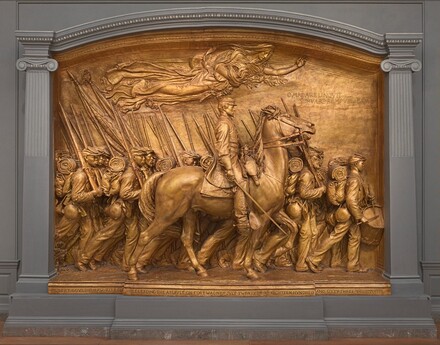
In March 2021, Frederick W. Gooding, Jr., Ph.D., was named a Leonard A. Lauder Visiting Senior Fellow by the National Gallery of Art (NGA) in Washington, D.C. The Leonard A. Lauder Senior fellowship was established in 2020 and builds upon the ongoing initiative of The National Gallery of Art’s Center for Advanced Study in the Visual Arts (CASVA) to promote the study of African American art.
The fellowship supports scholars researching historically underrepresented areas of art-historical study and the first fellowship cycle will support those focusing on the arts of African Americans, Africa and the African diaspora.
Over summer 2021, Gooding conducted research about Black representation in publicly accessible statues. Now, he shares his research methods, findings and next steps.
What is the background or reason behind researching this specific type of art?
In the aftermath of the brutal murder of George Floyd in May 2020, the summer that followed was filled with intense and heated debate about public symbols that may or may not reflect a truly equal society that we desire to be. Thus, Confederate Monuments came under heavy scrutiny with many being removed accompanied with suggestions for more diverse images to replace them. Thus, I began to wonder about before we move forward in time, how many Black statues do we have presently erected? I will also pose this question to the reader: “when and where was the last time that you saw a Black statue out in public?”
How did you conduct your research?
I spent essentially the entire summer of 2021 doing one of three things:
- Getting lost down "rabbit holes" inside one of the most impressive art libraries I've ever experienced at the National Gallery of Art.
- Combing the streets of D.C. on foot to search, code and record any Black statues I could find.
- Doing my best Ben Stiller impersonation of "Night at the Museum" with early morning arrivals and late evening departures at the NGA. It was a surreal feeling to have that intimate relationship with our nation's art!
How does this research reflect the mission of the Honors College?
This project whole-heartedly fulfills the John V. Roach Honors College mission since in order to become effective leaders in society, we must presently reconcile our future with our past.
What was the greatest take away from your research findings? Why should people know about it?
One of the greatest takeaways I have is that these Black statues I have been studying are more than mere "art in the park.” If anything, I now respect and behold public statues as powerful, poignant and poetic displays of political power. Therefore, people should know about this project because it provides us an opportunity to talk substantively and meaningfully about the value and visibility of Black people in our shared society.
What's next?
I am so excited to share that as a direct result of this research, I have signed a book contract with Lexington Press, an imprint of Rowman and Littlefield, with the provisional title, “Black Statues: What They Stand to Tell Us about Race in the Capital Space.” Stay tuned for a spring 2024 release — pardon the expression, but that date is not quite "etched in stone."
Anything else you'd like to share?
If anyone has any leads, thoughts, ideas, suggestions, critiques or encouragements, feel free to reach out at f.gooding@tcu.edu. I am humbled by the fact that there is no "one way" to view both aesthetic art and public politics, so I am doing my darnedest to remain open to ideas as I continue to explore my own.
Learn more about Gooding’s research in his Members’ Report published by The National Gallery of Art.